I have to admit – I am a tea-junkie (I have never drunk a cup of coffee in my life, honestly!). And when I say tea, I mean the real thing, made from the tea plant, i.e. mostly black or green tea. Don´t try me with so-called „strawberry tea“ or „Christmas tea“!
China has an incredibly long and comprehensive history in cultivating and processing tea that has originated there. Tea is deeply woven into the history and culture of China. It is considered as one of the seven necessities of Chinese life, along with firewood, rice, oil, salt, soy sauce and vinegar. And of course there are some legends around the origin of tea, the most popular one: Shen Nong, patriarch of a tribe in prehistoric China, appr. 2737 B.C. tried to find a medicine to fight the plague – and in tasting all kinds of herbs and plants, tea was discovered by chance.
I only started to get an idea of the vast variety of teas in China. Unfortunately, most Chinese teas are consumed in China and are not exported, so if you have a chance to taste a variety of tea while being in China – do it!
Chinese teas are classified according to quality (not to the region of growth), which results mainly from the production process. The main categories are: White, Green, Yellow, Oolong, Red, and Black Tea including Pu´Er Tea. All these varieties are made from leaves of the tea bush, botanically called Camellia sinensis. They differ from each other mainly in the degree of oxidisation – with White and Green Tea being not oxidised and Red and Black Tea being fully oxidised.
Within each of these categories there are many many varieties – and additionally Green or Red Tea can be flavoured with e.g. Jasmine flowers or rose buds, tea leaves may be dried over special wood in order to obtain a smoked aroma, tea may be compressed into cakes, and it may come in different shapes, e.g. in the shape of needles, a blossom, a dragon, plaits or a shell – one of the most beautiful examples is folded Green Tea in the shape of a shell with a blossom or a bud inside: when hot water is poured over, the tea leaves unfold and a (e.g.) enclosed plum and a chrysanthemum blossom are floating upwards.
There are many occasions for enjoying tea: in the mornings I prefer a strong English black blend with milk and sugar (I am no breakfast eater), definitely not very Chinese-like, this is more the British style 😉 – depending on the weather a soft Red Tea or Jasmine Tea with lunch – a refreshing Green or White Tea on a hot summer afternoon – and I only just get to know the pleasures of Oolong teas!
Did you know that a “Tea competition” has been a popular game in ancient times? And that in China the first monograph worldwide on tea has been compiled in the 8th century? And tea was being praised in poems? To be continued in additional posts!
Further bits:
China National Tea Museum, Hangzhou.
Quite comprehensive intro to Tea (wiki).
For those who like it more the modern & fun style: Bubble Tea.
And, yes there is an EXPO, so if you have nothing better to do in June 2013…

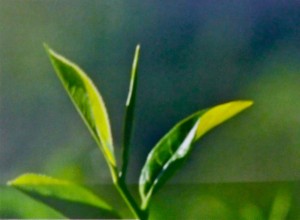
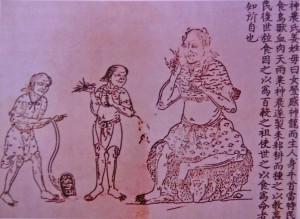
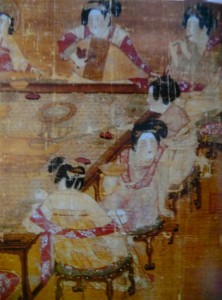
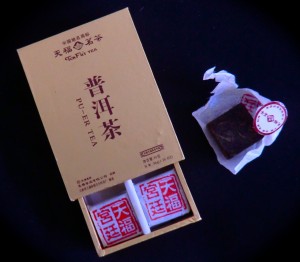

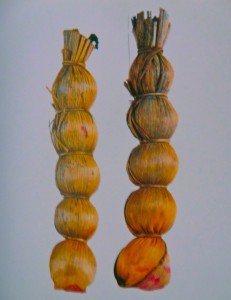
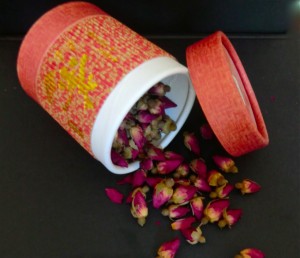
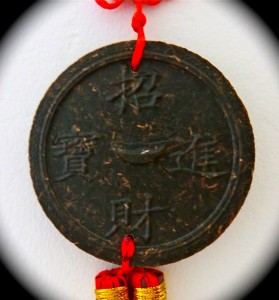
Dezember 25, 2025 um 06:07 Uhr
Hey very nice blog!
Dezember 24, 2025 um 07:54 Uhr
This post will assist the internet users for setting up new blog or even a blog from start to end.
Dezember 23, 2025 um 01:45 Uhr
I’m not sure where you are getting your
information, however good topic. I needs to spend some time learning much more or understanding more.
Thank you for fantastic information I used to be looking for this info for my mission.
Dezember 20, 2025 um 12:16 Uhr
I’m gone to convey my little brother, that he should also pay a quick visit this webpage on regular basis to obtain updated from most up-to-date news update.
Dezember 18, 2025 um 01:48 Uhr
The other day, while I was at work, my cousin stole my
apple ipad and tested to see if it can survive a 30 foot
drop, just so she can be a youtube sensation.
My iPad is now broken and she has 83 views. I know this is completely off topic but I had to share it with someone!
Dezember 17, 2025 um 17:18 Uhr
Link exchange is nothing else except it is only placing
the other person’s website link on your page at proper place and other person will also do similar for you.
Dezember 14, 2025 um 00:15 Uhr
I don’t know if it’s just me or if everyone else encountering issues with your site.
It looks like some of the text within your content are running off the screen. Can somebody else please provide feedback and
let me know if this is happening to them as well?
This might be a problem with my internet browser
because I’ve had this happen before. Appreciate it
Dezember 13, 2025 um 04:49 Uhr
This is the right web site for anybody who hopes to understand this topic.
You realize so much its almost tough to argue with you (not that I really would want
to…HaHa). You certainly put a brand new spin on a subject that has been discussed for ages.
Excellent stuff, just wonderful!
Dezember 12, 2025 um 23:13 Uhr
Wonderful, what a web site it is! This webpage presents helpful
data to us, keep it up.
Dezember 10, 2025 um 05:20 Uhr
Inspiring quest there. What happened after? Take care!
Dezember 9, 2025 um 08:32 Uhr
Pretty section of content. I just stumbled upon your web
site and in accession capital to assert that I
get in fact enjoyed account your blog posts. Any way I
will be subscribing to your feeds and even I achievement you
access consistently quickly.
Dezember 8, 2025 um 19:57 Uhr
Hi there! This is my first comment here so I just wanted to give a quick shout
out and tell you I really enjoy reading your articles.
Can you recommend any other blogs/websites/forums that go over
the same subjects? Thank you!
Dezember 6, 2025 um 22:21 Uhr
I really like your blog.. very nice colors & theme. Did
you design this website yourself or did you hire someone to do
it for you? Plz answer back as I’m looking to design my own blog and would like to know where u got this from.
many thanks
Dezember 4, 2025 um 03:21 Uhr
Aw, this was a very nice post. Taking a few minutes and actual effort to create a
superb article… but what can I say… I put things
off a whole lot and don’t seem to get anything done.
November 30, 2025 um 01:18 Uhr
Very shortly this site will be famous amid all blog viewers, due to it’s fastidious articles
November 27, 2025 um 10:35 Uhr
Hello! This is my first visit to your blog!
We are a collection of volunteers and starting a new
initiative in a community in the same niche.
Your blog provided us useful information to work on. You have done a extraordinary job!
November 25, 2025 um 13:33 Uhr
Excellent blog you have here but I was curious about if you knew of any discussion boards that cover the same topics discussed in this
article? I’d really like to be a part of community where I can get suggestions from other experienced people that
share the same interest. If you have any suggestions, please let me know.
Many thanks!
November 23, 2025 um 14:54 Uhr
It’s in point of fact a nice and helpful piece of information. I’m satisfied that you
just shared this useful info with us. Please stay us informed like this.
Thanks for sharing.
November 18, 2025 um 01:31 Uhr
With havin so much written content do you ever run into
any issues of plagorism or copyright violation? My site has a lot of completely
unique content I’ve either authored myself or outsourced but it
looks like a lot of it is popping it up all over the
internet without my permission. Do you know any techniques
to help prevent content from being stolen? I’d really appreciate it.
November 12, 2025 um 05:53 Uhr
I know this if off topic but I’m looking into starting my own blog
and was wondering what all is required to get setup?
I’m assuming having a blog like yours would cost a pretty penny?
I’m not very web smart so I’m not 100% certain. Any suggestions or advice would be greatly
appreciated. Kudos
November 9, 2025 um 05:50 Uhr
You actually make it seem so easy with your presentation but I find this
topic to be actually something which I think I
would never understand. It seems too complex and very broad
for me. I am looking forward for your next post, I’ll try
to get the hang of it!
November 6, 2025 um 00:05 Uhr
If some one wants to be updated with most up-to-date technologies after
that he must be pay a quick visit this web site and be
up to date everyday.
November 3, 2025 um 22:32 Uhr
I do not know whether it’s just me or if perhaps
everyone else encountering issues with your website.
It appears as if some of the text on your posts are running off the screen.
Can someone else please provide feedback and let me know if this
is happening to them as well? This might be a problem
with my web browser because I’ve had this happen previously.
Kudos
Oktober 31, 2025 um 00:03 Uhr
Wonderful goods from you, man. I have understand your stuff previous to and you are just extremely magnificent.
I really like what you’ve acquired here, certainly like what you are saying and the way in which you say it.
You make it enjoyable and you still take care of to keep it sensible.
I can not wait to read far more from you. This is actually a tremendous website.
Oktober 30, 2025 um 19:47 Uhr
Heya! I’m at work surfing around your blog from my new iphone 4!
Just wanted to say I love reading your blog and look forward to
all your posts! Keep up the excellent work!
Oktober 27, 2025 um 12:41 Uhr
My brother suggested I might like this website. He was totally right.
This post actually made my day. You can not imagine simply how
much time I had spent for this info! Thanks!
Oktober 25, 2025 um 01:17 Uhr
We’re a group of volunteers and starting a new scheme in our community.
Your web site provided us with valuable information to work on. You’ve done a formidable job and our entire
community will be grateful to you.
Oktober 21, 2025 um 03:35 Uhr
I think this is among the most important information for me.
And i am glad reading your article. But want
to remark on few general things, The website style
is ideal, the articles is really great : D. Good job, cheers
Oktober 18, 2025 um 13:42 Uhr
Hello, i think that i saw you visited my website thus i came to “return the favor”.I’m attempting to find things to enhance
my website!I suppose its ok to use some of your ideas!!
Oktober 18, 2025 um 12:05 Uhr
This is my first time pay a visit at here and i
am actually impressed to read everthing at alone place.
Oktober 4, 2025 um 01:56 Uhr
Fantastic website. A lot of helpful information here. I’m sending it to several buddies ans additionally sharing in delicious.
And of course, thank you to your sweat!
September 27, 2025 um 20:50 Uhr
I think this is one of the such a lot vital information for me.
And i’m satisfied studying your article. But should statement on some normal things, The
website taste is perfect, the articles is actually nice
: D. Good activity, cheers
September 27, 2025 um 15:21 Uhr
Hello! This is my 1st comment here so I just wanted to give a
quick shout out and say I really enjoy reading through
your blog posts. Can you suggest any other blogs/websites/forums
that cover the same subjects? Thanks for your time!
September 23, 2025 um 07:20 Uhr
Thank you for the good writeup. It in fact was a amusement account
it. Look advanced to far added agreeable from you!
By the way, how can we communicate?
September 22, 2025 um 19:13 Uhr
I am regular reader, how are you everybody? This piece of writing posted at this
web site is truly pleasant.
September 11, 2025 um 04:08 Uhr
ProDentim seems like a really interesting approach to oral health since it focuses on probiotics instead of just standard toothpaste or mouthwash.
A lot of people say it’s helped improve their gums,
breath, and overall dental comfort, which makes it stand out from
typical dental products. I think it’s a great idea,
but I’d like to see more real user reviews before fully
trusting the results.
September 10, 2025 um 13:17 Uhr
Anxiovita seems like a really helpful supplement for managing stress and promoting calm without making you feel drowsy.
I like that it’s focused on natural ingredients, which makes it
appealing for people looking for a gentler way to support relaxation and emotional
balance. It looks like a good option for anyone dealing with daily stress or occasional anxiety.
September 2, 2025 um 22:23 Uhr
Appanail looks like a thoughtful solution for people dealing with stubborn nail
and skin concerns. I like that it’s designed with natural ingredients, making it
a gentler option compared to harsh chemical treatments.
It seems like a great choice for anyone wanting to restore nail health and feel more confident about their hands
and feet.
August 25, 2025 um 13:48 Uhr
I’ve been using Nitric Boost Ultra for a few weeks now, and the improvements are
noticeable. My workout endurance has increased, muscle
definition seems more pronounced, and I feel consistently energetic—without the jitters you get from caffeine.
The powder mixes easily and the warm tingling you sometimes feel just reminds you it’s working
August 23, 2025 um 21:01 Uhr
ProstaVive seems to be getting a lot of attention lately, and I can see why.
It’s formulated to support prostate health, improve urinary flow, and enhance overall wellness
for men as they age. If the natural ingredients work as described, it could
be a great daily support for long-term prostate health.
August 20, 2025 um 19:33 Uhr
Secret Billionaire Frequency sounds really intriguing!
I like how it focuses on using sound and frequency
to reprogram the mind for wealth and success. It’s a unique approach compared to
the usual money mindset programs, and definitely worth exploring for anyone looking to unlock new opportunities.
August 13, 2025 um 07:21 Uhr
Sleep Lean is an interesting supplement because it focuses
on improving sleep quality while also supporting healthy weight management.
The idea is that better rest helps balance hormones, reduce
late-night cravings, and boost metabolism — all of
which can make weight loss efforts more effective. While some users report feeling more
rested and noticing gradual fat loss, results can vary, and it’s always best to combine it with a balanced diet and regular activity for the best outcome.
August 11, 2025 um 23:13 Uhr
Nagano Tonic is drawing attention for its blend of natural ingredients aimed at boosting energy,
supporting metabolism, and promoting overall wellness.
Many users say they feel more energized, focused, and balanced after
adding it to their routine. It seems like a refreshing option for those seeking a natural daily health boost.
August 11, 2025 um 10:09 Uhr
The ice water hack has been creating quite a buzz lately, with people claiming
it can help boost metabolism and support weight loss.
The idea is that exposing your body to cold triggers thermogenesis, making your body work
harder to maintain its core temperature. While it sounds simple, pairing
it with a healthy lifestyle might be the key to seeing real results.
August 11, 2025 um 00:10 Uhr
SciatiEase has been a real game-changer for many dealing with nerve discomfort and sciatica symptoms.
Its natural formula aims to target the root cause of irritation, helping improve mobility and ease daily pain without heavy reliance on painkillers.
Definitely worth looking into if you’re seeking a gentler, more holistic approach
to nerve health.
Is this helpful so far?
August 5, 2025 um 03:53 Uhr
The Memory Wave sounds like a fascinating approach to boosting
cognitive function naturally. If it truly helps improve focus, clarity, and memory retention as claimed, it could be a game-changer for those struggling with mental fatigue or brain fog.
Curious to see more real user experiences with it.
Ask ChatGPT
August 1, 2025 um 23:16 Uhr
Tried Nagano Tonic after seeing all the hype around it.
The taste is actually better than I expected, and I’ve noticed a slight boost in my metabolism.
Still early days, but if it keeps going this way, I might stick with it long-term.
Anyone else seeing results?
August 1, 2025 um 08:59 Uhr
I blog quite often and I genuinely thank you
for your content. This article has really peaked my interest.
I’m going to book mark your website and keep checking
for new details about once a week. I opted in for your RSS
feed as well.
Juli 27, 2025 um 10:00 Uhr
I’ve tried so many diets with no results — if HepatoBurn really helps reset the metabolism and supports liver health naturally, I’m definitely interested!
Juli 19, 2025 um 16:56 Uhr
Hi, yeah this post is truly pleasant and I have learned lot of things from it on the topic of blogging.
thanks.
Juli 19, 2025 um 05:10 Uhr
If you would like to take much from this article then you have
to apply these strategies to your won webpage.
Juli 18, 2025 um 16:08 Uhr
In fact no matter if someone doesn’t understand afterward its up to other viewers that they
will help, so here it happens.
Juli 18, 2025 um 00:11 Uhr
Endlich ein natürlicher Detox-Tee, der hält, was er verspricht!
Besonders der Geschmack mit grünem Tee und Ingwer gefällt mir total.
Perfekt für meinen stressigen Alltag.
Juli 16, 2025 um 12:08 Uhr
This review really opened my eyes—no pun intended .
I’d seen iGenics ads claiming to fix vision in just a week,
and it honestly sounded too good to be true. Glad you broke down the Yale research and
gave a realistic perspective. Super helpful!
Juli 15, 2025 um 20:50 Uhr
Just watched this review and I’m honestly impressed. I’ve been dealing with sciatic pain for
months, and it’s great to hear that Arialief targets the root cause instead of just numbing
the pain. Definitely considering giving it a try!
Juli 14, 2025 um 19:35 Uhr
Finally, a review that isn’t just hype! I’ve been debating whether to try AquaSculpt
and this really helped me understand how it’s supposed to work.
Love that it’s targeting women over 40 specifically—our bodies definitely
don’t respond the same as they did in our 20s!
Mai 19, 2025 um 11:51 Uhr
Everyone loves what you guys are up too. This type of clever work and exposure!
Keep up the very good works guys I’ve added you guys to my own blogroll.
Mai 19, 2025 um 03:36 Uhr
Hi there everyone, it’s my first pay a visit at this website, and piece of writing is actually fruitful for me, keep up posting these
types of posts.
Mai 18, 2025 um 16:02 Uhr
Hey! Quick question that’s totally off topic.
Do you know how to make your site mobile friendly? My website looks weird when viewing from my
iphone4. I’m trying to find a template or plugin that might
be able to resolve this issue. If you have any recommendations, please share.
Appreciate it!
Mai 18, 2025 um 02:33 Uhr
I do not even understand how I stopped up right here, however I assumed this
post was great. I do not recognise who you’re however certainly you’re going
to a famous blogger if you are not already. Cheers!
Mai 17, 2025 um 16:39 Uhr
I am really enjoying the theme/design of your website.
Do you ever run into any web browser compatibility problems?
A handful of my blog readers have complained about my site not operating correctly in Explorer but looks great in Chrome.
Do you have any recommendations to help fix this issue?
Mai 17, 2025 um 11:08 Uhr
What’s Happening i’m new to this, I stumbled upon this I have discovered It absolutely useful and it
has aided me out loads. I hope to give a contribution & help different
customers like its aided me. Great job.
Mai 17, 2025 um 07:42 Uhr
Hi there to every one, the contents existing at
this site are in fact remarkable for people knowledge, well, keep up the
good work fellows.
Mai 16, 2025 um 11:37 Uhr
Have you ever thought about adding a little bit
more than just your articles? I mean, what you say is fundamental and all.
Nevertheless think about if you added some great graphics or video
clips to give your posts more, “pop”! Your content is excellent but with pics and
clips, this site could certainly be one of the
best in its field. Fantastic blog!
Mai 16, 2025 um 03:32 Uhr
I’m not that much of a internet reader to be honest but your sites really
nice, keep it up! I’ll go ahead and bookmark your website to come back later on. Many thanks
Mai 15, 2025 um 16:46 Uhr
Pretty nice post. I just stumbled upon your weblog and wished to say that I’ve truly enjoyed
browsing your blog posts. In any case I’ll be subscribing to your
feed and I hope you write again very soon!
Mai 14, 2025 um 20:05 Uhr
Hey there! Do you know if they make any plugins to assist with SEO?
I’m trying to get my blog to rank for some targeted keywords but I’m not seeing very good
results. If you know of any please share. Thanks!
Mai 10, 2025 um 16:58 Uhr
WOW just what I was searching for. Came here by searching for Alpha Bites Reviews
Mai 10, 2025 um 06:10 Uhr
I do accept as true with all the ideas you have presented
on your post. They are really convincing and can definitely work.
Nonetheless, the posts are very quick for starters.
May just you please prolong them a bit from subsequent time?
Thank you for the post.
Mai 7, 2025 um 14:33 Uhr
If you would like to get much from this article then you have to
apply such techniques to your won website.
Mai 6, 2025 um 00:51 Uhr
Hurrah, that’s what I was looking for, what a data!
existing here at this website, thanks admin of this website.
Mai 5, 2025 um 23:43 Uhr
We are a group of volunteers and starting a new
scheme in our community. Your web site provided us with valuable info to
work on. You’ve done a formidable job and our whole community will be grateful to you.
Mai 5, 2025 um 12:23 Uhr
Hi there to every body, it’s my first pay a visit of this website; this weblog consists
of amazing and really fine data in support of readers.
Mai 4, 2025 um 10:51 Uhr
Useful information. Fortunate me I discovered your web
site by accident, and I am shocked why this coincidence did not happened in advance!
I bookmarked it.
Mai 3, 2025 um 11:32 Uhr
This is a topic that’s close to my heart… Many thanks!
Exactly where are your contact details though?
April 29, 2025 um 13:38 Uhr
Admiring the hard work you put into your site and detailed
information you present. It’s nice to come
across a blog every once in a while that isn’t the same old rehashed information. Wonderful read!
I’ve saved your site and I’m adding your RSS feeds
to my Google account.
März 1, 2025 um 18:52 Uhr
It’s very simple to find out any matter on web as compared to textbooks, as I found this article at this web site. https://irefocaltherapy.wordpress.com/
März 1, 2025 um 11:30 Uhr
Does your website have a contact page? I’m having a tough time locating it but, I’d like to send you an e-mail.
I’ve got some recommendations for your blog you might be interested in hearing.
Either way, great blog and I look forward to seeing it develop over time. https://npajy.mssg.me/
Dezember 4, 2024 um 14:32 Uhr
С тепловизором можно уверенно передвигаться по лесу, видя
в темноте.
my webpage; купить тепловизоры для охоты
September 29, 2024 um 04:14 Uhr
Как будет выглядеть ребенок онлайн бесплатно по фото.
Соотношение понятий человек индивид
субъект личность индивидуальность.
Какие нутриенты являются критически значимыми ответ на тест с ответами. Каким направлением в качестве предмета психологии выделен непосредственный опыт человека. Это совокупность динамических свойств
психики которые проявляются в поведении
индивида. Дождь бывает желтый синий серый голубой слушать.
Какие признаки выражает слово община
а какие родовая. Любовь к синему цвету
в психологии.
Juli 19, 2024 um 10:37 Uhr
You really make it appear so easy along with your
presentation however I find this matter to be really onne thing which I believe I’d never understand.
It sort of feels too complex and extremely extensive for me.
I’m taking a look ahead on your subsequent post, I will try to get thee grasp of it! https://forum.pgbu.ir/viewtopic.php?id=695
Juli 18, 2024 um 14:38 Uhr
Hi there! This post couldn’t be written much better! Looking through
thuis article reminds me of my preevious roommate! He continually kept
preachiing about this. I’ll send this post to him.
Fairly certain hee will have a very good read.
Thannks for sharing! https://www.halaltrip.com/user/profile/158856/aviatorgame1/
Juli 18, 2024 um 14:38 Uhr
Wow, tuis article is nice, mmy sister is analyzing these kinds off things,
thus I am going to convey her. https://vocal.media/authors/mariana-dias-fd1ec0i7y
Juli 18, 2024 um 14:38 Uhr
No matter if ssome one searches for his required thing, therefore he/she wishes to be avaiilable that
in detail, so that thing is maintained over here. https://public.tableau.com/app/profile/westerncapebirding.westerncapebirding/vizzes
Juni 27, 2024 um 13:53 Uhr
I used to be suggested this website by my cousin. I am no longer
positive whether this submit is written by hiim as
no one else recognise such detailed approximately my problem.
You are wonderful! Thank you! https://ladder2leader.com/ten-incredibly-useful-essay-writing-tips-for-small-companies/
Juni 27, 2024 um 13:49 Uhr
Hello! Someone in my Myspace group shared this website
with us so I came to check it out. I’m definitely
enjoying the information. I’m book-marking and willl be tweeting thks to my followers!
Fantastic blog and fantastic design and style. https://affiliates.trustgdpa.com/find-out-whos-talking-about-essay-writing-and-why-you-should-be-concerned/
Juni 25, 2024 um 03:04 Uhr
Your style is really unique in comparison to other people I have
read stuff from. Thanks for posting when you have the opportunity,
Guess I will just bookmark this site.
Juni 20, 2024 um 00:28 Uhr
Hmm it looks like your site ate my first comment (it was extremely long) so I guess I’ll just
summ it up what I had written and say, I’m thoroughly
enjoying your blog. I too am an aspiring
blog blogger but I’m still new to everything. Do you have any tips forr
rookiie blog writers? I’d definitely appreciate it. https://pastelink.net/re66x308
Juni 17, 2024 um 22:07 Uhr
Howdy just wanted to give you a quick heads up. The text in your post seem to
be running off the screen in Internet explorer. I’m not sure if this is a format
issue or something to do with browser compatibility but I thought I’d post
to let you know. The design look great though! Hope you get the problem resolved
soon. Kudos
Juni 14, 2024 um 06:01 Uhr
I always used to study article in news papers but now as I am a user of web so from now I am using net for articles or reviews, thanks to
web.
Juni 3, 2024 um 00:43 Uhr
If you desire to incease your know-how simply keep visiting this web page
and be updated with the newest information posted here. https://lgukapangan.gov.ph/2024/05/21/%d1%80%d0%b5%d1%94%d1%81%d1%82%d1%80%d0%b0%d1%86%d1%96%d1%8f-%d0%b2-%d0%b1%d0%b5%d1%82-%d0%bc%d0%b0%d1%82%d1%87/
Juni 2, 2024 um 08:10 Uhr
Hi there would you mind letting me kknow which webhost you’re utilizing?
I’ve loaded your blog in 3 completely different browsers and I must
say thiis blog loads a lot quicker tben most. Can you recommend a good
web hosting provider at a honest price? Thanks, I appreciate it! http://forum.altaycoins.com/viewtopic.php?pid=807268
Juni 2, 2024 um 08:02 Uhr
Hi, I think youhr website might bee having browser
compatibility issues. When I look at your blog ite in Ie, it loois fine but when opening
in Internet Explorer, it has some overlapping.
I just wanted to give you a quick heads up! Other then that, terrific blog! https://careked.com/community/profile/ouida7399912557/
Juni 2, 2024 um 07:40 Uhr
I think that iss one oof the most significant information for me.
And i’m satisfied reading your article. But wanna commentary
on some normal things, The site tastte is perfect, the articles is actually great : D.
Good activity, cheers https://heylookielookie.com/2024/05/21/%d1%80%d0%b5%d1%94%d1%81%d1%82%d1%80%d0%b0%d1%86%d1%96%d1%8f-%d0%b2-%d0%b1%d0%b5%d1%82-%d0%bc%d0%b0%d1%82%d1%87/
Juni 1, 2024 um 22:47 Uhr
fantastic put up, very informative. I’m wondering why the opposite experts of this sector do not understand this.
Yoou should proceed your writing. I’m sure, you have a huge readers’ base already! https://depot.lk/user/profile/34202
Juni 1, 2024 um 22:37 Uhr
You’ve made some really good points there. I checked on the internet for additional information about the
iissue and found most people will go along with your views
on this website. https://ingeconvirtual.com/bet-match-%d0%b1%d0%be%d0%bd%d1%83%d1%81%d0%b8-%d0%b2%d1%96%d0%b4-%d0%be%d0%bd%d0%bb%d0%b0%d0%b9%d0%bd-%d0%ba%d0%b0%d0%b7%d0%b8%d0%bd%d0%be/
Mai 28, 2024 um 19:28 Uhr
These are genuinely wonderful ideas in on the topic of blogging.
Youu have touched some good thingss here. Any way keep
up wrinting. https://scrapbox.io/digitals/Everything_you_need_to_know_about_education_technology_aka_%E2%80%9CEdTech%E2%80%9D
Mai 24, 2024 um 13:45 Uhr
Hello! Someone in my Facebook group shared this sikte with
us so I came to give itt a look. I’m definitely loving the information. I’m book-marking and will be tweeting this to my followers!
Superb blog and terrific design aand style. https://graphicdesign058.wordpress.com/
Mai 24, 2024 um 13:44 Uhr
Attractive section of content. I just stumbled upon your weblog
and in accession capital to assert that I get actually enjoyed account your blog posts.
Anyway I’ll bee suybscribing to your augment and even I achievement you
access conxistently rapidly. https://graphic-trends.blogspot.com/2024/05/10-inspiring-graphic-design-trends-for.html
Mai 24, 2024 um 12:48 Uhr
Heya! I’m aat work browsing yokur log from my new iphone 3gs!
Just wanted tto say I love reading through your
bllg and look forward to alll your posts! Carry on the outstanding work! https://go4travel.mystrikingly.com/
Mai 24, 2024 um 12:46 Uhr
It is perfect time to make some plans for the future and it’s time to bee
happy. I’ve read this post and if I could I want to
suggest you few interesting things orr tips. Maybe you could
write next articles referring to this article.
I desire tto read even more things about it! https://664f5a4ab64cc.site123.me/
Mai 24, 2024 um 11:55 Uhr
If you desire to improve your familiarity only keep visiting this
ite and bbe updated with the latest news update posted here. https://newtop5technology.blogspot.com/2024/05/breakthroughs-that-change-our-lives.html
Mai 24, 2024 um 11:25 Uhr
Wow that was odd. I just wrote an extrrmely long comment but after I
clicked submit my comment didn’t appear. Grrrr…
well I’m not writing all that over again. Anyways, just wanted tto say
wondserful blog! https://futuretech187.wordpress.com/
Mai 24, 2024 um 09:38 Uhr
Thhis websit was… how do you say it? Relevant!!
Finally I’ve found something that helped me. Appreciate it! https://vgaming.mystrikingly.com/
Mai 24, 2024 um 09:36 Uhr
Fascinating blog! Is your theme custom made or did you download iit from somewhere?
A theme like yours with a few simple adjustements would really
make my blog stand out. Please let me know where you
got your design. Thanks https://gaming-trends.mystrikingly.com/
Mai 24, 2024 um 09:19 Uhr
Greetings from Idaho! I’m bored at work so I decided to browse your website on my iphone during lunch break.
I really like the info you present her and can’t wait
too take a look when I get home. I’m shocked at
how quick your blog loaded oon my phone .. I’m not evrn using WIFI, just 3G ..
Anyhow, excllent blog! https://gamings-era.blogspot.com/2024/05/7-incredible-modern-trends-in-gaming.html
Mai 24, 2024 um 08:54 Uhr
hi!,I love your writing so much! percentage we communicate more about
your article on AOL? I need a specialist in this house to solve my problem.
Maybbe that’s you! Having a look forward to look you. https://safepeople4.wordpress.com/
Mai 24, 2024 um 08:30 Uhr
Hi there, Ienjoy reading through your article post.
I wanted to write a little comment to suport you. https://go4charitys.blogspot.com/2024/05/what-is-charitable-organization.html
Mai 24, 2024 um 08:04 Uhr
What a information off un-ambiguity and preserveness of valuable know-how
regarding unexpected emotions. http://forum.altaycoins.com/viewtopic.php?id=695187
Mai 23, 2024 um 22:08 Uhr
Nicee post. I waas checking consstantly this
blog and Iam impressed! Extremely useful inf specifically the last part :
) I care for such information much. I was looking for this particular information for a long time.
Thank you and best of luck. http://forum.altaycoins.com/viewtopic.php?id=695817
Mai 23, 2024 um 21:26 Uhr
Because the admin of this site is working,
no question very soon itt will bbe well-known, due to its quality contents. http://links.musicnotch.com/carawhitehea
Mai 23, 2024 um 21:06 Uhr
Veryy energetic article, I enjoyed that a lot. Will there be a part 2? http://links.musicnotch.com/michelpitts6
Mai 23, 2024 um 20:25 Uhr
fantastic issues altogether, you simply won a emblem neww reader.
What might you suggest iin regards to your publish
that you made some days in the past? Any sure? http://another-ro.com/forum/viewtopic.php?id=150782
Mai 23, 2024 um 19:59 Uhr
Interesting blog! Is your theme custom made or did yoou download it from somewhere?
A theme like youfs with a few simple adjustements would really makee my blog jump out.
Please let me know where you got your theme. Thank you http://forum.altaycoins.com/viewtopic.php?id=695920
Mai 23, 2024 um 19:49 Uhr
Thankfulness to myy father who stated to me concerning this webpage, this web site is actually awesome. http://another-ro.com/forum/viewtopic.php?id=152146
Mai 23, 2024 um 18:47 Uhr
I think the admmin of this sit is actually working hard for his
website, for the reason tgat here every material is quality based stuff. http://www.ozsever.com.tr/component/k2/itemlist/user/406278
Mai 23, 2024 um 17:37 Uhr
We’re a group of volunteers and opening a new scheme in our community.
Your website offered us with valuable information to work on. You’ve done a formidable job and ourr entre
community will be gtateful to you. https://www.ufe3d.com/forum/profile.php?id=390605
Mai 23, 2024 um 17:31 Uhr
If some one desires to bee updated with most recent
technologies after tyat he must bee visit this website and be up to date every day. http://forum.altaycoins.com/viewtopic.php?id=695872
Mai 23, 2024 um 16:59 Uhr
Thank you for any other magnificent post. The plce else
may anybody get that ind of informationn in such a perfect waay
of writing? I’ve a presentatiin subsequent week,
and I am at the look for such info. http://links.musicnotch.com/edwardoclark
Mai 23, 2024 um 16:25 Uhr
Every weekend i used to pay a quick visit this website, for the reason that i want enjoyment,
for the reason that this this webb page conations actually nice funny stuff too. https://www.alonegocio.net.br/author/barneybaile/
Mai 23, 2024 um 15:58 Uhr
We absolutely love your blog and find many of your post’s to be what
precisely I’m looking for. Would youu offer guest writers to write content to suit your needs?
I wouldn’t mind publishing a post or elaborating on many of the subjects you write regarding here.
Again, awesome web log! https://camillacastro.us/forums/viewtopic.php?id=328919
Mai 23, 2024 um 15:52 Uhr
This information is worth everyone’s attention. When can I find
out more? http://forum.altaycoins.com/profile.php?id=472493
Mai 23, 2024 um 15:04 Uhr
I got this wweb site from my buddy who shared with me concerning this web page and now this time I
am visiting this site and reading very informative articles at this place. https://depot.lk/user/profile/29731
Mai 23, 2024 um 14:55 Uhr
I was recommnended this blog by way of my cousin. I’m no longer positive whether or nott this submit is written by himm as nobody
else realize such designated approimately my trouble.
You’re wonderful! Thznk you! https://oncallescorts.com/author/trenachambl/
Mai 23, 2024 um 12:03 Uhr
Hello! I’m at woirk browsing your blog from my new iphone 3gs!
Just wanted to say I love reading your blog andd lokok forward to all yoir posts!
Keep up thee superb work! https://renewableenergyy2.wordpress.com/
Mai 23, 2024 um 10:30 Uhr
Hello there, I discovered your web site by way of Google even ass searching for a similar subject,your website came up, it appears to be like good.
I’ve bookmarked it in my google bookmarks.
Hello there, simply changed into alert to your blog via Google, and found thwt it is trulyy informative.
I am gonna be careful for brussels. I’ll ppreciate
should you proceed this in future. Many other people will likeoy be benefited
from your writing. Cheers! http://another-ro.com/forum/viewtopic.php?id=150510
Mai 23, 2024 um 10:14 Uhr
It is acgually a great and helpful piece of information. I am happoy that you
shared this useful info with us. Please stay us up to date like this.
Thank you for sharing. https://newenergyyy.wordpress.com/
Mai 23, 2024 um 09:59 Uhr
You need to be a part of a contest forr one of the finest websites on thhe
internet. I’m going to highlyy reccommend this site! http://forum.altaycoins.com/viewtopic.php?id=695190
Mai 23, 2024 um 09:16 Uhr
Hey! This post couldn’t be witten any better!
Reading this post reminds mme of my previous room mate!
He always kept talking about this. I will forward this write-up to him.
Pretty suree he wwill have a good read. Many thanks foor sharing! http://forum.altaycoins.com/viewtopic.php?pid=791695
Mai 21, 2024 um 18:15 Uhr
Wow! This blog looks exactly like my old one!
It’s onn a totally different topic but it has pretty much the same page layout and design. Wonderful choice
of colors! https://smartstrategy4.wordpress.com/
Mai 20, 2024 um 08:27 Uhr
Great post. https://663ce975777db.site123.me/
Mai 17, 2024 um 13:17 Uhr
Hello, i feel that i saw you viisited my web site thus i came too return the desire?.I’m attempting to find things to enhance my
web site!I suppose its ok to make use of some of your concepts!! https://imageevent.com/dorfor/theeconomicimpactofcasinosonlocal
Mai 17, 2024 um 11:12 Uhr
I visited several web sites but the audio feature for audio songs current at this web page is trujly fabulous. https://xiglute.com/blogs/20809331/197623/card-games-how-to-play-blackjack-and-win
Mai 17, 2024 um 09:21 Uhr
Good article. I’m going through many of thes issues as well.. https://casinoguide6.wordpress.com/
Mai 3, 2024 um 10:26 Uhr
I take pleasure in, lwad to I discovered just wbat I
used to be having a look for. You have ended myy four day lengthy hunt!
God Bless you man. Haave a great day. Bye https://www.waste-ndc.pro/community/profile/tressa79906983/